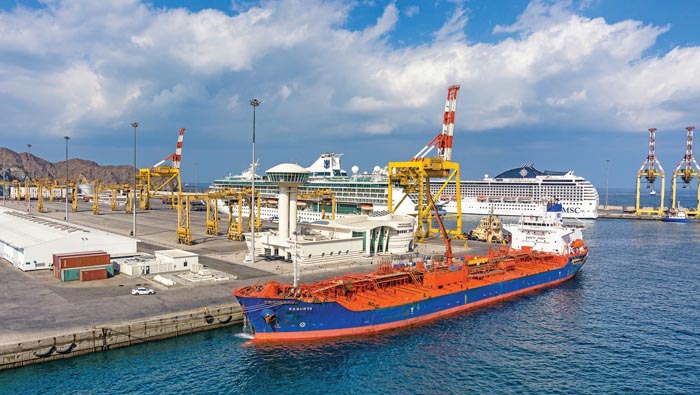
Muscat: Oman’s three major port projects could power the economy for decades to come, a number of senior economists in the country have said.
As the Sultanate begins to diversify its economy under the Tanfeedh plans for economic expansion, the government is actively committing resources to its logistics sector, as a result of which the ports of Sohar, Salalah, and Duqm and their surrounding free zones have seen major investments in the last few years.
The projects aim to turn Oman into a regional logistics and shipping powerhouse, with the Sultanate’s strategic location making it a key player in the immediate and global shipping industry.
In an exclusive interview with the Times of Oman, Fabio Scacciavillani, Chief Strategic Officer of the Oman Investment Fund, said these three ports will only add to Oman’s economic potential in the future.
Big hub
“Salalah is already a reality, it is a big hub and has already set its reputation worldwide and will probably grow organically in the next few years,” he said.
“A substantial boost came from the blockade of Qatar, so a lot of trade to the peninsula is going through Sohar. This has improved its operations and its balance sheet,” Scacciavillani added.
“Looking ahead, Sohar will benefit from the new factories in the Sohar Free Zone and the global growth that will come from the Liwa refinery and other major initiatives,” added Scacciavillani.
Some $26 billion (OMR10 billion) has been committed for Sohar Port, with at least $10.7 billion (some OMR4 billion) more pledged for the development of the Sino-Oman Industrial City alone in Duqm. In addition, the Salalah Free Zone has already received some $3.5 billion (OMR1.35 billion), with plenty more expected to come after Salalah Port posted a growth of 29 per cent last year.
“The project that will be a game changer is Duqm,” said Scacciavillani. “Duqm is the new magnet for the 21st century. Its free zone and port are going to be some 1800sq.km, which is the size of Hong Kong.
“This will be for warehouses, power plants, and so many other industries. It is a new city, and it is a new magnet, as I said, for the Oman economy, and it will be the new engine of growth for Oman for this century, not just the next few years.”
Yahya bin Said Al Jabri, the General Supervisor of the Special Economic Zone Authority of Duqm (SEZAD), the government arm that oversees the development of Duqm, said the organisation has plenty of ambitions for 2018 and beyond.
“We have laid the foundation for two distinct projects,” he explained.
“The first project is the Sino-Oman Industrial City, which will have an investment of some $10.7 billion through a variety of projects. The second project is the bus manufacturing project which will be funded through Omani and Qatari investments.”
“Last year, we witnessed the signing of 87 usufruct and development agreements with a total investment of more than OMR610.2 million. The most important of those projects are the Little India Company project, which will establish an integrated tourism complex worth OMR288 million, and the Al Wusta Cement Company project.”
Some 20 per cent of the world’s petroleum and 35 per cent of all fuel traded by sea pass through the Strait of Hormuz, which is jointly controlled by Iran and Oman, the latter through its northern governorate of Musandam. Between the two, Scacciavillani said Duqm has greater appeal because of its location on the open sea.
“It’s hard to change the shipping lanes quickly, because these are set processes, so it’s not something you can do in a couple of months,” he said.
“But Duqm can definitely become a transshipment point for the entire peninsula. It can become a port for India, for Africa, and for parts of the Arab world. The process will take time. Jebel Ali, which is the main competitor, is important, but its influence is limited to the Gulf region.”
“Duqm has a bigger appeal and broader opportunities, because it is located directly on the Indian Ocean,” added Scacciavillani. “This may change the shipping patterns little by little, but that depends on how well the shipping companies will be involved in the project, how the infrastructure will work, how efficient the warehousing will be, the effectiveness of offloading of containers, and so on and so forth. I am sure that the location is great, but you have to complete and complement that with infrastructure that is world-class.”
Ramanuj Venkatesh, a finance analyst with experience in both Oman and the UAE, agreed that the impact of Oman’s ports on the economy could be wide-ranging.
“Omani ports have been a mainstay in the country’s economy,” said Venkatesh.
“Considering Oman’s strategic location in the Gulf, steps have been taken to improve the developing of maritime corridors and the logistics sector. Considering the volatility of the oil prices, the maritime sector is a much needed boost to further highlight Oman’s presence as a major reliable and trusted partner in global trade,” added Venkatesh